IAAI – poster session papers
- Analysis of surface EMG signals to control of a bionic hand prototype – Adam Pieprzycki, Piotr Wawryka, Katarzyna Łachut , Mateusz Hamera, Bartosz Srebro
- Anticipated network of optimizers for smart grid applications – Anna Jarosz, Andrzej M.J. Skulimowski
- Application of artificial neural network and finite element method for the identification of parameters of layered pavement – Marek Wojciechowski, Marek Lefik, Artur Góral
- Application of LSTM neural network in CPTU testing interpretation – Mateusz Jocz, Marek Lefik
- Automated System for Indoor Sport Video Production – Jagoda Lazarek, Sebastian Purtak, Paweł Gora, Łukasz Gąsiorowski, Aneta Wilenczyc
- Brief Overview of Selected Research Directions and Applications of Process Mining in KRaKEn Research Group – Krzysztof Kluza, Mateusz Zaremba, Dominik Sepioło, Piotr Wiśniewski, Weronika T. Adrian, Maria Teresa Gaudio, Paweł Jemioło, Marek Adrian, Krystian Jobczyk, Bernadetta Stachura-Terlecka, Mateusz Ślażyński, Antoni Ligêza
- Carbon Footprint Reduction of a Petrochemical Process Supported by ML Digital Twin Modelling – Sławomir Kulikowski, Andrzej Romanowski, Artur Sierszen
- Cellular automata with learning for modelling behavior known from observations – Marek Lefik, Daniela Boso, Marcin Krasiński
- Cognitive technologies for sustainable business processes – a literature review – Marcin Hernes, Ewa Walaszczyk, Krzysztof Nowosielski, Agata Kozina
- Context-Aware Fake News Detection Model – Jose Fabio Ribeiro Bezerra
- Deep learning based forecasting the demand and production of electricity from renewable sources – Michał Pikus, Jaroslaw Was, Pawel Morkisz
- Digital twin for training set generation for unexploded ordnance classification – Marcin Blachnik, Piotr Ściegienka
- Energy dissipation anomalies in buildings – Michał Morawski, Arkadiusz Tomczyk
- Explainable Predictive Maintenance in Steel Manufacturing Process – Szymon Bobek, Jakub Jakubowski, Grzegorz Nalepa
- Fabric Defect Detection by Fully Convolutional Network – Patryk Najgebauer, Rafal Scherer, Jakub Walczak, Adam Wojciechowski, Ewa Łada-Tondyra
- Identification of Damaged AIS Data Based on Clustering and Multi-Label Classification – Marta Szarmach, Ireneusz Czarnowski
- Integrating Anomaly Detection for Enhanced Data Protection in Cloud-Based Applications – Piotr Napieralski, Konrad Czerkas, Agnieszka AD Duraj, Krzysztof Lichy, Piotr Lipinski, Michał Morawski, Dariusz Puchala, Marcin Kwapisz, Adrian Warcholiński, Piotr Wosiak, Michał Drozd
- Integration of AI techniques for Optical Music Recognition – Stanisław Graczyk, Ewa Łukasik, Tomasz Łukaszewski
- Knowledge extraction and linking in developing a food knowledge graph in the project TAISTI – Agnieszka Lawrynowicz, Weronika T. Adrian, Anna Wróblewska
- Lessons Learned from a Smart City Project with Citizen Engagement – Sebastian Ernst, Konrad Zaworski, Piotr Sokołowski, Grzegorz Salwa
- Machine learning for water leak detection and localization in the WaterPrime project – Przemysław Głomb, Michał Romaszewski, Michał Cholewa, Wojciech Koral, Andrzej Madej, Maciej Skrabski, Katarzyna Kołodziej
- Ocular artefact removal from multi-channel EEG data with tensor decomposition – Zuzana Rošťáková, Roman Rosipal
- Performance Analysis of Machine Learning Platforms Using Cloud Native Technology on Edge Devices – Konrad Cłapa, Krzysztof Grudzień, Artur Sierszen
- Predicting the popularity of research topics with the use of deep learning – Dawid Pytka, Piotr Szczepaniak, Łukasz Chomčtek
- RNN-based phase unwrapping for enabling vital parameter monitoring with FMCW radars – Piotr Luczak, Sławomir Hausman, Krzysztof Slot
- Statistical method for photovoltaic power forecasting basing on signal components decomposition – Paweł Parczyk, Robert Burduk
- Text-to-music models and their evaluation methods – Mateusz Modrzejewski, Przemyslaw Rokita
- Towards Ontology-Driven Verification of Car Claims Settlement – Krzysztof Pancerz, Jacek Wolski
- Using security games against wild dumping sites – Marek Adrian, Jerzy Markiewicz
- Various strategies for solving inverse problems in geotechnics, involving artificial neural networks – Marek Wojciechowski, Marek Lefik, Artur Góral
- VideoAI – system for synchronization of electronic program guides – Jan Wasilewski, Bartosz Sochaj, Adam Gaca
- Virtual Reality interactive game for upper body rehabilitation – Beate Banga, Valters Abolins, Maksims Ivanovs, Krisjanis Nesenbergs

